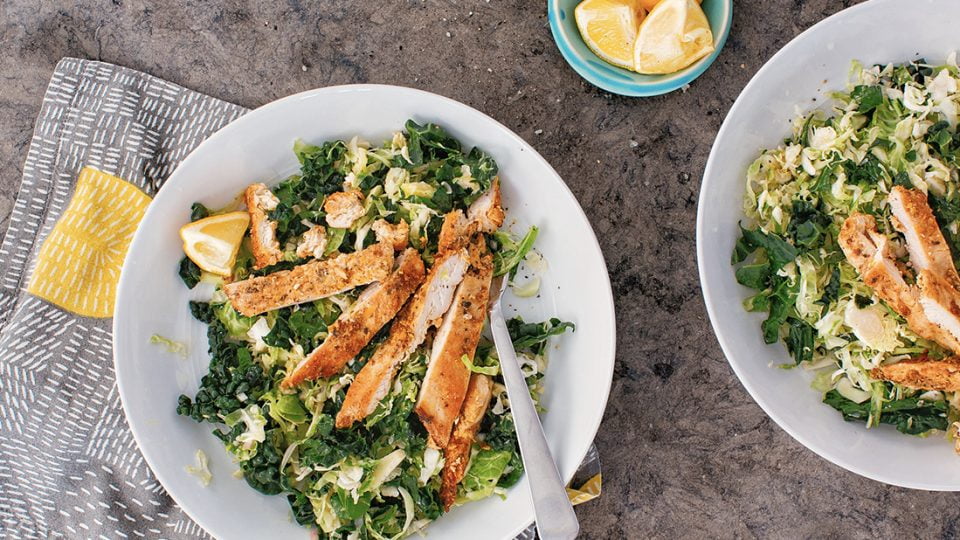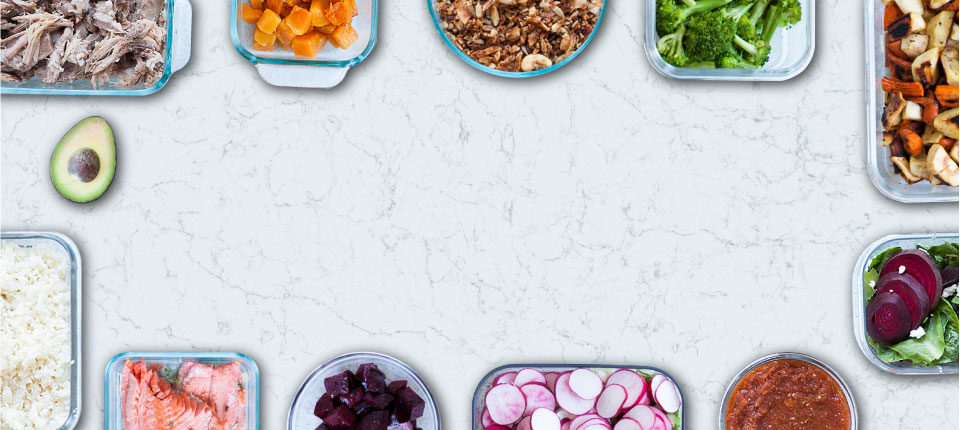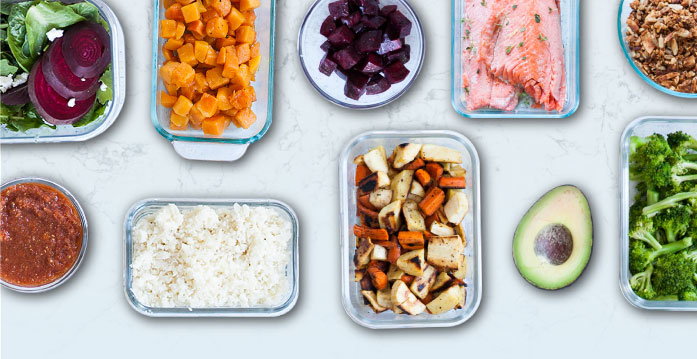Make sure your paleo game is strong by giving yourself easy access to paleo foods and ingredients. The nuts and bolts of the paleo diet are no grains, no legumes, no dairy, and no refined sugar. But even with clear “rules,” mealtime gets confusing when you have a pantry full of food you can’t eat – or one that’s missing all the foods you can. Here’s a paleo food list to get you started.
The paleo pantry
Almond flour is made with blanched almonds ground into a fine meal. Use alone or with other grain-free flours for paleo baked goods.
Apple cider vinegar can clean your home, your vegetables, and your body. Ever wonder about that gooey web at the bottom of the bottle? Raw, unfiltered apple cider vinegar naturally contains probiotic bacteria. This means it supports gut health. Use it to make salad dressings. Or toss a tablespoon in bone broth as it cooks.
Arrowroot thickens sauces. Sometimes, a recipe for a baked paleo treat will call for arrowroot. As a thickener, start by substituting two teaspoons of arrowroot for one tablespoon of cornstarch. When using instead of wheat flour, use one teaspoon of arrowroot for one tablespoon of wheat flour.
Coconut flour comes from the pulp of coconut. Mostly made of fiber, it absorbs plenty of liquid and mixes well with other flours when making paleo baked goods. Add at least 20% more liquid when using coconut flour.
Coconut oil is full of saturated fatty acids. This means that it can withstand high temperatures – like pan frying. If you’d rather not taste a hint of coconut with your meals, try refined coconut oil. With a neutral flavor, it’s still packed with saturated medium-chain fats that your body immediately uses for energy.
Ghee – otherwise known as clarified butter – has roots in Indian cuisine. Like coconut oil it’s stable at high temperatures, making an ideal fat to cook with. If you’re sensitive to cow dairy, you may be able to tolerate ghee – since all the protein-containing milk solids have been removed.
Honey in its raw and unprocessed form is an antiseptic and contains enzymes and minerals that you won’t find in commercial honey. While honey may taste sweet – similar to refined table sugar – the benefits of raw honey make it far superior to plain sugar.
Nuts and seeds are good source of protein, fat, and fiber. They’re both convenient and versatile. Toss a handful in a baggie for snacks on-the-go. Sprinkle toasted seeds on salads for texture and a nutty flavor. Use to make homemade nut butter.
Sea salt and/or pink Himalayan salt are both high in trace minerals that your body needs. Use in the same way you would use table salt.
The paleo refrigerator and freezer
Bone broth – either made at home or purchased through a reliable source – adds flavor and depth to soups, stews, and sauces. Besides that, a broth made with a leftover chicken carcass or knuckle bones is a good source of gelatin, which supports the health of your connective tissue – from your joints to your skin.
Eggs from local, pasture raised hens are an excellent source of protein. Egg yolk is high in choline, zinc, and vitamin B12, and vitamin D – provided the hen that produced the egg is able to spend time outdoors.
Nut and seed butters, such as almond butter, homemade cashew butter, or sunbutter are easy to transform into a quick snack or even bake with. While organic store-bought brands are good, the best butters are those that are homemade with soaked and dehydrated nuts and seeds.
Organ meats like liver and heart are a true superfood and packed with a spectrum of nutrients that you’ll be hard-pressed to find anywhere else. Shop for organs that have been harvested from animals raised outdoors and on pasture. If you’re uncertain about liver’s edgy flavor, try adding it to a tomato meat sauce or burgers.
Frozen meat and seafood can be a lifesaver when you’re in need of some emergency protein. Buy in bulk directly from a farmer in your area or when your local butcher has a good sale. Also, focus on quality. You’ll find more omega-3 fats in grass-fed beef. Wild-caught salmon contain higher levels of vitamin D. Likewise, lard from free-range pork is an excellent source of vitamin D.
Fruit and vegetables that you pick up at the market are best when bought in season and – if possible – from local farms. While there are a few tricks to storing your fruit and veggies, it’s a good idea to always keep green, colorful foods in rotation and on your plate. This is because plant foods feed your healthy gut bacteria, supporting digestion and a robust immune system.


